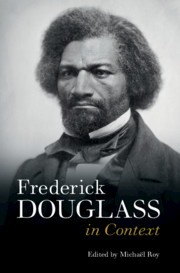Book contents
- Frederick Douglass in Context
- Frederick Douglass in Context
- Copyright page
- Contents
- Illustrations
- Contributors
- Chronology
- Abbreviations
- Introduction
- Part I Places
- Part II Genres
- Part III Activism
- Part IV Philosophy
- Part V Networks
- Part VI Afterlives
- Chapter 28 Paratexts
- Chapter 29 Deployments
- Chapter 30 Deployments
- Chapter 31 Teaching
- Chapter 32 Bicentennial
- Further Reading
- Index
Chapter 31 - Teaching
from Part VI - Afterlives
Published online by Cambridge University Press: 16 June 2021
- Frederick Douglass in Context
- Frederick Douglass in Context
- Copyright page
- Contents
- Illustrations
- Contributors
- Chronology
- Abbreviations
- Introduction
- Part I Places
- Part II Genres
- Part III Activism
- Part IV Philosophy
- Part V Networks
- Part VI Afterlives
- Chapter 28 Paratexts
- Chapter 29 Deployments
- Chapter 30 Deployments
- Chapter 31 Teaching
- Chapter 32 Bicentennial
- Further Reading
- Index
Summary
This chapter reviews the varied and creative ways people have taught Frederick Douglass’s four autobiographies and weighs methods for inspiring critical thought and performance skills through Douglass’s speeches. Douglass’s 1845 Narrative is used at multiple levels of education as a platform for reflecting on what literacy is and how Douglass – and students themselves – have become literate in their world. Other teachers consider how Douglass has constituted himself in relation to audiences he wished to move to political action, reflecting on his self-portraits and shaping of key incidents in his life. The chapter also advocates for offering students a choice of speech events to analyze and perform. This helps them to refine their thinking about contemporary issues and make performance decisions, imagining how Douglass – and they, too – wish to move an audience.
Keywords
- Type
- Chapter
- Information
- Frederick Douglass in Context , pp. 381 - 392Publisher: Cambridge University PressPrint publication year: 2021

